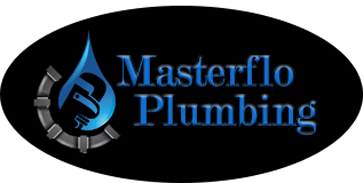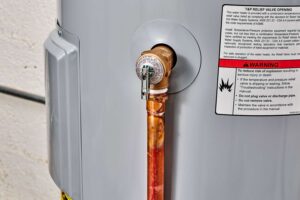
Why Do Bathroom Drains Get Blocked Frequently?
Blocked bathroom drains are a common annoyance, often caused by the accumulation of hair, soap scum, and small objects like hair ties. At Masterflo Plumbing, we understand the frustration and inconvenience these blockages can cause. That’s why we emphasize the importance of regular maintenance and preventive strategies to keep your drains clear. As experts in plumbing systems, we have the knowledge and tools to help you address and prevent these issues effectively. Let us guide you through understanding and managing the common causes of drain blockages, ensuring your bathroom plumbing remains in optimal condition.
Key Takeaways
- Hair accumulation mixed with soap scum causes blockages.
- Soap residue buildup over time leads to frequent clogs.
- Mineral deposits from hard water narrow drain passages.
- Foreign objects like hair ties and cotton swabs block drains.
- Excess toiletries adhere to pipe walls, causing frequent blockages.
Hair Accumulation
When dealing with bathroom drain blockages caused by hair accumulation, you can easily tackle the issue by regularly cleaning the drain with a drain snake. Hair tends to clump together with soap scum and other debris, forming clogs that restrict water flow. To prevent this buildup, make it a habit to remove any visible hair from the drain after each shower. Additionally, consider installing a drain cover to catch hair before it goes down the drain.
If you already have a blockage, start by removing the drain cover and using a drain snake to pull out the accumulated hair. Simply insert the snake into the drain and twist it while pushing it further down to catch the hair clog. Pull the snake back up, along with the hair, to clear the blockage. Remember to dispose of the removed hair properly to prevent it from causing further blockages.
Soap Residue
To address soap residue in your bathroom drain, consider that soap scum often combines with hair and other debris to create blockages that impede water flow. Soap residue is a common culprit for clogging drains due to its sticky nature. When you shower or wash your hands, the soap scum can stick to the walls of the pipes, accumulating over time. As more soap scum builds up, it traps hair, dirt, and other particles, leading to a blockage. To prevent soap residue from causing drain blockages, try using less soap or opting for soap-free alternatives. Additionally, regularly cleaning your drain with a mixture of hot water and vinegar can help break down soap scum buildup. Installing a drain catcher can also prevent soap residue and hair from going down the drain in the first place. By being proactive in managing soap residue, you can reduce the frequency of bathroom drain blockages.
Mineral Deposits
Mineral deposits in your bathroom drain can contribute to blockages and hinder proper water drainage. These deposits often accumulate from hard water, which contains high levels of minerals like calcium and magnesium. Over time, these minerals can build up on the walls of your pipes, narrowing the passageway for water to flow through. As the mineral deposits grow, they can trap other debris like hair and soap scum, leading to stubborn clogs. To prevent this issue, consider using a water softener to reduce the mineral content in your water supply. Regularly cleaning your drains with a mixture of vinegar and baking soda can also help dissolve these deposits and keep your pipes clear. By staying proactive and addressing mineral buildup early on, you can maintain smooth water flow in your bathroom drains and minimize the chances of blockages occurring.
Foreign Objects
Foreign objects such as hair ties, cotton swabs, and small toys can easily get lodged in your bathroom drain, causing blockages and disruptions in water flow. These items may seem harmless when they first slip down the drain, but over time, they accumulate and create clogs that impede the proper drainage of water. To prevent such issues, it’s crucial to be mindful of what goes down your bathroom drain. Here are some key points to keep in mind:
- Dispose of small objects properly: Make sure to throw away small items like hair ties or cotton swabs in the trash rather than flushing them down the drain.
- Use drain covers: Installing drain covers can help catch small objects before they make their way into the pipes.
- Regular maintenance: Schedule periodic drain cleaning to remove any potential blockages caused by foreign objects.
- Educate household members: Teach everyone in your household about the importance of not allowing foreign objects to enter the drain to avoid blockages.
Excess Toiletries
If you’re not cautious with your bathroom drain, excess toiletries can easily contribute to the potential for blockages and water flow issues. Items like excessive amounts of toothpaste, hair products, or bar soap can accumulate in your drain over time, creating clogs. When these toiletries go down the drain, they can adhere to the pipes’ inner walls and trap other debris passing through, leading to reduced water flow and eventual blockages.
To prevent this, try to be mindful of how much toiletry you’re using and make sure that excess amounts don’t end up down the drain. Consider using hair catchers or drain screens to prevent larger toiletry particles from entering the pipes. Additionally, regular cleaning of your drains using safe cleaning methods can help prevent buildup.
Pipe Misalignment
To avoid potential drainage issues in your bathroom, examine pipe misalignment as it may contribute to blockages and impact water flow. Pipe misalignment can lead to slow water drainage and increase the chances of clogs forming in your bathroom drains. Here are some key points to contemplate:
- Visual Inspection: Look for any visible signs of pipes not lining up correctly or gaps between connections.
- Strange Noises: Listen for unusual sounds such as gurgling when water is draining, which could indicate misaligned pipes.
- Water Backup: Pay attention to any water backup in sinks or tubs, as this may signal a misalignment causing poor drainage.
- Professional Assessment: If you suspect pipe misalignment, contemplate contacting a plumber to assess the situation and make any necessary repairs promptly.
Addressing pipe misalignment promptly can help prevent blockages and maintain proper water flow in your bathroom drains.
Inadequate Drainage Slope
Inspect the drainage slope in your bathroom to identify any inadequacies that could hinder proper water flow and contribute to blockages. The drainage slope is vital for guaranteeing that water and waste move efficiently through the pipes and out of your home. If the slope is too shallow, water may pool in the pipes, leading to clogs and blockages. Common causes of inadequate drainage slope include improper installation, settling of the building foundation, or gradual changes over time due to factors like erosion or soil shifting.
To address this issue, consider consulting a professional plumber to assess the slope and make any necessary adjustments. They may need to reposition or regrade the pipes to ensure proper drainage. Additionally, installing a drain snake or using a chemical cleaner can help clear minor blockages caused by poor drainage slope. By maintaining a sufficient slope in your bathroom drainage system, you can prevent frequent blockages and guarantee smooth water flow.
Aging Plumbing
Check your bathroom’s plumbing for signs of aging, such as rust, leaks, or corrosion, which can lead to blockages and other issues over time. Aging plumbing is a common cause of frequent bathroom drain blockages. Here are some reasons why aging plumbing can result in blockages:
- Maintain Pipe Diameter: As pipes age, they can narrow due to a buildup of debris, reducing water flow and increasing the likelihood of clogs.
- Secure Pipe Joints: Over time, the connections between pipes can weaken, leading to leaks and potential blockages as debris gets caught in the compromised joints.
- Mineral Accumulation: Older pipes are more prone to mineral deposits forming on the interior walls, gradually constricting water flow and causing blockages.
- Cracked or Damaged Pipes: Aging plumbing is more susceptible to cracks or damage, which can create obstructions in the pipes and hinder proper drainage.
Regularly inspecting and replacing aging plumbing components can help maintain blockages and ensure smooth water flow in your bathroom drains.
Lack of Regular Maintenance
Considering the potential consequences of neglecting regular maintenance on your bathroom’s plumbing, it’s important to address the issue of lack of regular maintenance promptly. By not staying on top of maintenance tasks like cleaning drains and checking for leaks, you’re setting yourself up for frequent blockages and potential costly repairs. Regular maintenance helps prevent the build-up of hair, soap scum, and other debris that can clog your drains over time. When you ignore this upkeep, these substances accumulate, leading to slow drainage and eventually complete blockages.
Moreover, lack of regular maintenance can contribute to larger plumbing issues such as pipe corrosion or leaks. Small leaks can go unnoticed for a long time, causing water damage, mold growth, and even structural problems in your home. By simply incorporating regular maintenance into your routine, you can catch these issues early on and avoid extensive damage and expensive repairs down the line. Remember, a little maintenance now can save you a lot of trouble in the future.
Choose Masterflo Plumbing for Your Plumbing Needs
As North Georgia’s premier plumbing service, Masterflo Plumbing brings more than 20 years of expertise to your doorstep. Our team of certified master plumbers is ready to tackle any plumbing challenge, from water heater repairs to comprehensive plumbing issues. Trust us to provide dependable, efficient service across Cherokee County and the greater metro Atlanta area. For all your plumbing needs, big or small, rely on Masterflo Plumbing—the name you can trust.

